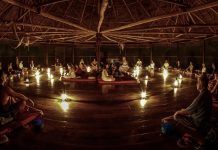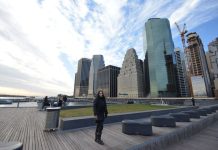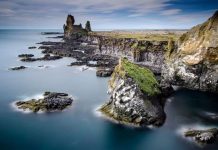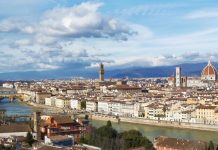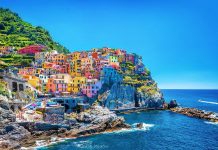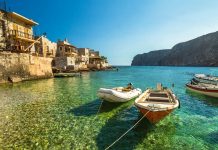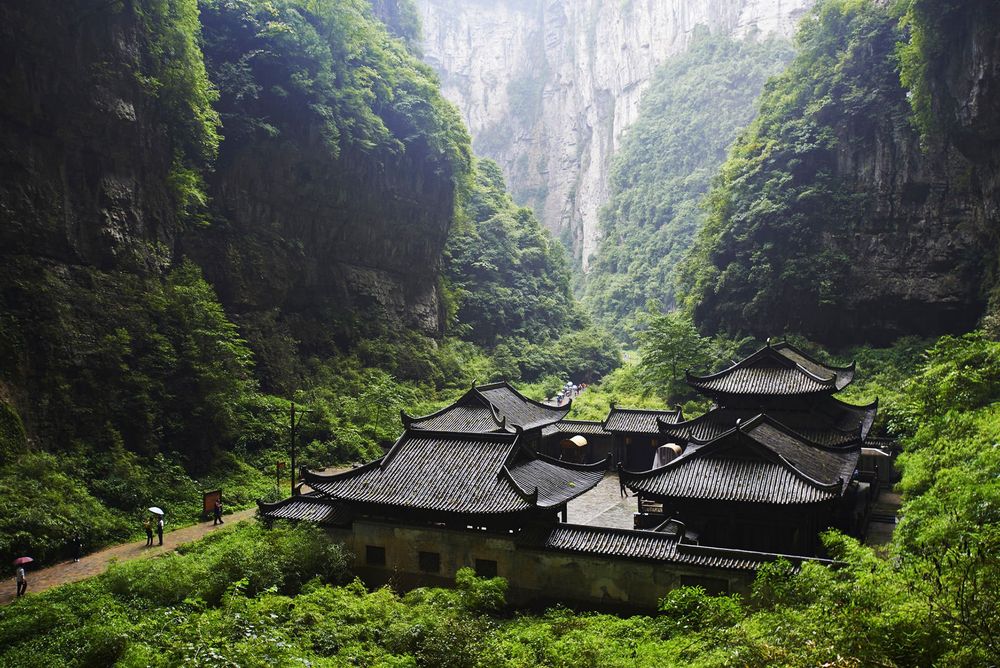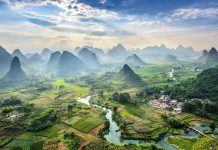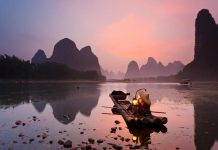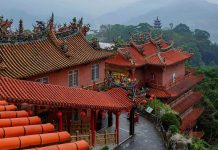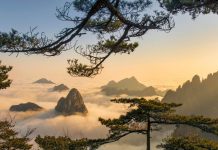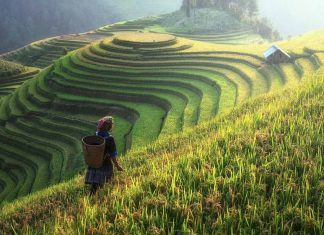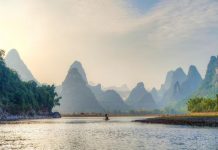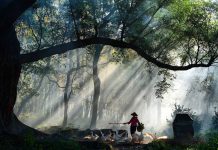To the south of Zhengzhou is Nanjetsun (entrance is free) — the last stronghold of Maoist collectivism in China. You won’t find Buddhist temples or misty mountain peaks there, but a trip to Nanjetsun is akin to time travel — this time to puritanical revolutionary China of the 1950s, when Mao’s personality overshadowed everything, money was an attribute of yesterday, and even the most vigilant sons of the party could not predict the threat that was revealed in the appearance of karaoke.
The feeling of a different world first arises when trying to leave luggage for storage in a supermarket on the western outskirts of the village. Smiling girls in revolutionary khaki do not require money for this — wow!
Passing through CHAOYANG Gate
Entering Nanjetsun through the Chaoyang Gate is like crossing a fantastic border of parallel worlds. Moving south, you will see how the bustling life of a dirty shopping street in modern China turns into a drill step under the powerful pressure of communist agitation. In Nanjetsun, no one shouts or spits on the streets, there are no barkers and idle onlookers – as there are no beggars and “massage parlors”. Austerity and socialism reign everywhere. This is especially striking if you have already managed to get used to the importunity of the modern Chinese economy. But do not rush to conclusions and take a walk on the outskirts of the commune. There is a lively atmosphere in the center of Nanjetsun, but the far corners of the village may seem completely abandoned. The streets look deserted, and only the rustling of the tires of a passing bicycle disturbs the dull peace of lifeless factories.
Perhaps Nanjetsun resembles an average town in North Korea; straight lines of streets of perfect cleanliness, discreet socialist decor, a noodle factory, a school and rows of identical apartment buildings hung with kumach slogans. One of them says: “A drop of water will never dry up only if it is part of a large ocean; a person becomes truly strong only by being part of a collective.” Portraits of the deified Chairman look down from a height, and flocks of white pigeons complete the surreal landscape.
Walk east along Insung Dadao Street to the Scarlet East Square, where two armed sentries are frozen at the foot of the statue of Mao. On the four sides of the square hang portraits of Marx, Engels, Lenin and Stalin — the very first “Gang of Four” in history. Propaganda chants are carried from loudspeakers of the sample of the 1950s. A short walk in the north direction will allow you to see Chaoyangmen Square and the Chaoyang Gate, rebuilt in the traditional style, crowned with a portrait of Sun Yat-sen.
At the southern end of the village, near the botanical garden, a gallery of miniature copies of Maoist shrines has been created. This is a favorite place of Communist tourists.

